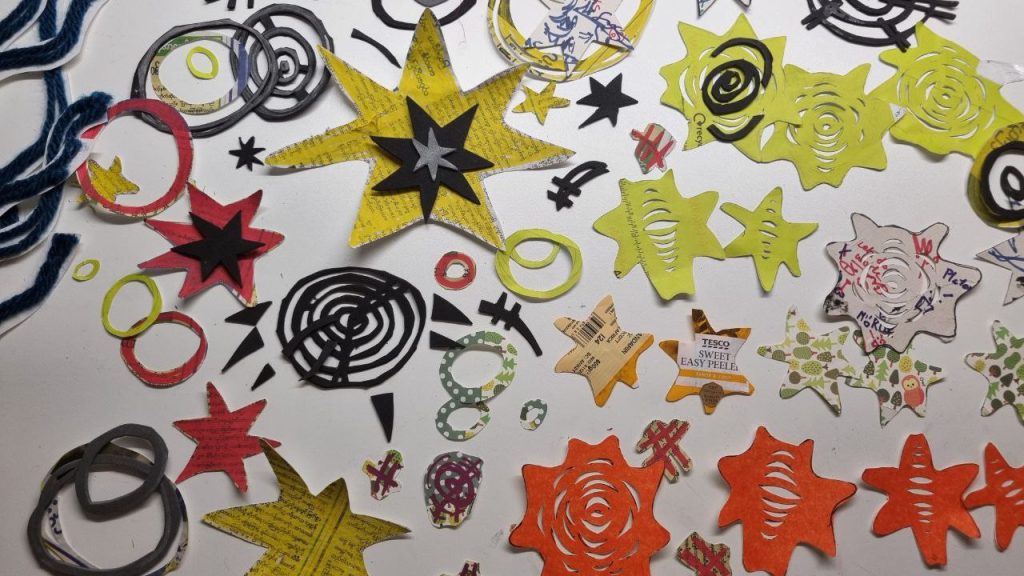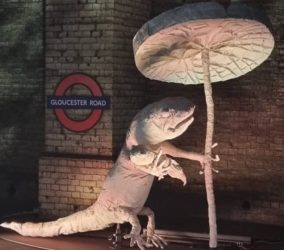In this post, I will document the creative process of this project and have the evaluation and feedback reflection in the next post.
SKETCH BOOK PAGES OF THE CREATIVE PROCESS:






After getting the specifics of the brief, I sketched out thumbnails of the imagery I was envisioning for this sound. (The brief summary is in the Week 1 post). I went with a star since the original café sounds rough, spikey and overall chaotic – and I thought sharp edges can convey it visually.
After picking out of the thumbnails, I planned out the timings through writing and with an animatic sequence. Since I’ve worked with stop motion before, I wanted to try out something more experimental for this project – thus even though I have a general understanding of the pieces I need to cut out, I also kept it very loose so that I can improvise and try things out during the shooting day on Monday.
CUTTING THE PEICES TO ANIMATE:





I used an array of recycled materials and colored paper to make the part visually stand out out of the black background that our group established. I think that I should’ve numbered my materials better and kept them in chronological order if it were a more precise animation and plan that I’m following. It could’ve gone better if I put wire at the back of the blue waves rather than acetate and my hands to hold them. However, I found that if I place the acetate in a sturdy position (folding it over twice), I could have the star float like I anticipated it to.
I think that the acetate added to the animation when I put a large curved sheet of it for the background particles – since it warped the reflections of the foreground – and contributed into the visual element of my part overall. I’m also quite intrigued with the way shadow plays a part in creating depth within the space.
In terms of team work aspects, since we had 7 people within the group with only 3 hours to spare, we decided to split the group into 2, where I was the middle. Knowing that there are 3 more people needing to make their part and me spending already 1/2 of the time allocated, I did rush a bit around the end. In terms of teamwork, we all discussed our main plan and structure, before creating our own individual parts. We would end with someone’s starting shape and we kept it very flexible.
[Proper feedbacks and reflections in the next post:]

